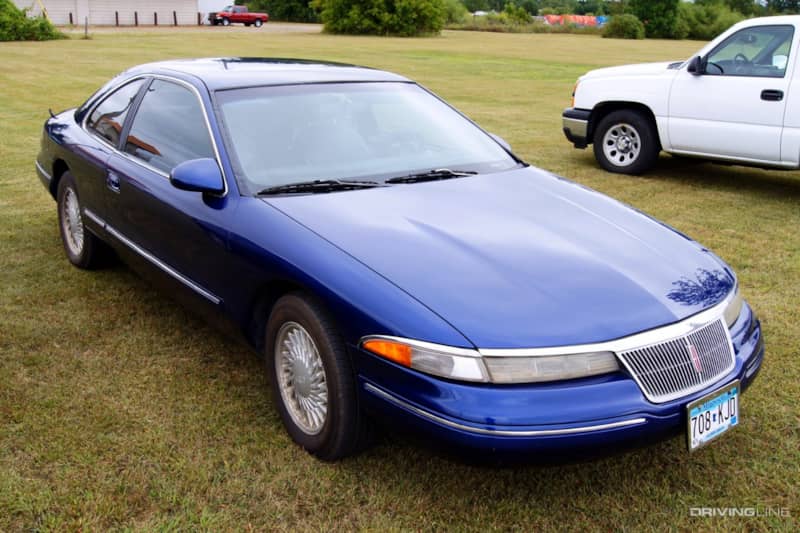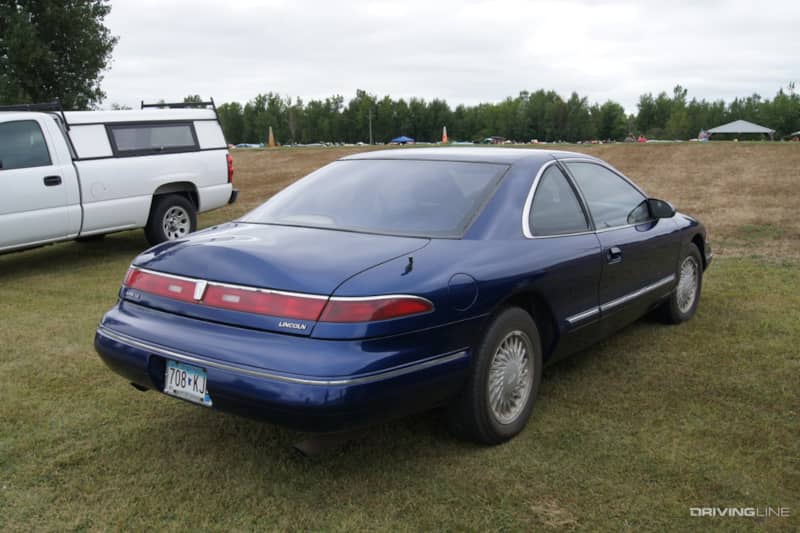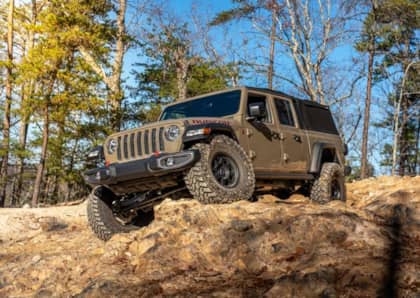Cobra Before Cobra: The 1994-1998 Lincoln Mark VIII
When Ford introduced its modular engine family to the Mustang lineup in the mid-'90s, much ado was made about how the Cobra was gaining an exotic, all-aluminum 32-valve dual-overhead cam motor that was light-years ahead—at least technologically—of the pushrod V8s found under the hood of the cross-town rival Chevrolet Camaro.
Less attention was paid to the fact that that very same engine had already been available in FoMoCo showrooms for several years. Under the guise of the Lincoln badge, the aluminum 4.6L engine—dubbed Intech before it transitioned to Cobra—was the only motor ever offered in the automaker's sleek Mark VIII full-size coupe.
That the Lincoln Mark VIII was "Cobra before Cobra" isn't the only thing that makes this largely forgotten car unique. In fact, the last of the Mark series two-doors proved to be the final flash of excitement produced by the once-proud Lincoln nameplate for the next 20 years.
New Decade, New Attitude
When the Lincoln Mark VIII appeared on the scene for the 1993 model year, it was sitting on an all-new platform that left the Fox-body roots of the Mark VII far behind it. The new Mark was 4.1 inches longer than the vehicle it replaced and almost four inches wider. Its significantly expanded wheelbase offered a stability, grace and presence that the older coupe lacked. The platform itself had been based on the MN-12 chassis that underpinned the Ford Thunderbird and Mercury Cougar. However, by the end of its development program, Lincoln deemed that the Mark VIII had strayed far enough from its roots to gain its own platform designation of FN-10.

All of that extra size somehow didn't translate into greater bulk, as the Mark VIII found itself weighing in at 30 lbs less than its predecessor. The decision to use an all-aluminum engine, plus composite materials in areas like the car's long hood, helped make up for the extra mass imparted by advanced tech such as four-wheel independent suspension and an active air spring system.
The latter automatically lowered the Lincoln's ride height by almost one full inch should it maintain speeds of 55 mph or greater for longer than 45 seconds. Ostensibly, this was to improve the Mark VIII's aerodynamics and overall fuel economy (and made for a particularly thrilling advertising campaign), but it also proved to be a boon to those few hot rodders who latched on to the car's performance potential and began modifying sensor signals to drop the coupe to the ground by manipulating air levels.
In terms of styling, the Mark VIII also broke new ground for the brand. It preserved the "Continental Kit" spare tire hump on the trunk, but only in vestigial form, where it performed spoiler duty and helped keep the rear of the car planted. The curved headlights, scalloped sides and driver-focused cockpit were new for Lincoln, as was the wrap-around taillight setup (which eventually featured neon illumination), and helped to modernize its image in a rapidly evolving market.
From Italy, With Love
Back to that engine. Unlike other Ford 4.6L units, which were produced in either Michigan or Ontario, Canada, the Lincoln Mark VIII motor was cast by Teksid in Italy, all the way on the other side of the Atlantic. Teksid was owned by Fiat and had been producing engines since the late-'70s. Over the years, they had perfected the aluminum casting process—still a dark art for many manufacturers of the time—and had a reputation for building extremely strong blocks.

How strong? Unlike the significantly weaker iron-block 4.6L, the 6-bolt main Teksid units were said to be capable of holding up to 1,200hp. This has since made them prized by aftermarket tuners seeking drop-and-play engines that can take significant amounts of boost yet easily fit under the hood of high performance Ford products.
At the time, the Lincoln Mark VIII wasn't making anything like 1,200hp, but it was definitely putting down much more power than many of its contemporaries on the luxury coupe scene, and certainly shamed the same-era Mustang in terms of output. In stock form the Mark was good for a hefty 280hp at 5,500 rpm (with secondary intake runners fully open) and 285 lb-ft of torque at 4,500, sent to the rear wheels via a four-speed automatic transmission. When the LSC model appeared in 1996, it added an extra 10hp to the mix, thanks to the appearance of an improved dual exhaust system.
Despite a curb weight of roughly 3,700 lbs, it had enough power to push the Mark VIII past 60 mph in less than seven seconds—exceptional acceleration for an early-'90s luxury car. The top speed was limited to a healthy 130 mph.
Almost Forgotten
Initially, the Lincoln Mark VIII was a success. Lincoln moved 32,400 cars in the first model year, more than double the Mark VII from the previous year. Two more years of solid results were followed by a steep decline in customer interest as a surge in sport-utility vehicles strangled the personal luxury coupe segment to death by the end of the decade. Despite gaining numerous visual, feature and handling upgrades in 1997, Lincoln canceled the Mark VIII the following year, and to date, they have yet to build another two-door model.

The Intech motor would find its way into the Mustang Cobra in 1996, where it was rated at 305hp and 300 lb-ft. Lawsuits, however, challenged those figures as being inaccurate, and disappointed pony car owners eventually settled with Ford out of court (an improved motor would appear for the '99 model year).
To this day, the Lincoln Mark VIII remains largely under the radar, a well-hidden piece of '90s performance history with a small but loyal following still modifying, developing and supporting the platform. Seeing one on the road is a rare treat—and seeing one line beside you at the drag strip means you may be about to bear witness to the full power forced-induction promise that Teksid cast into those aluminum blocks so many years ago.







